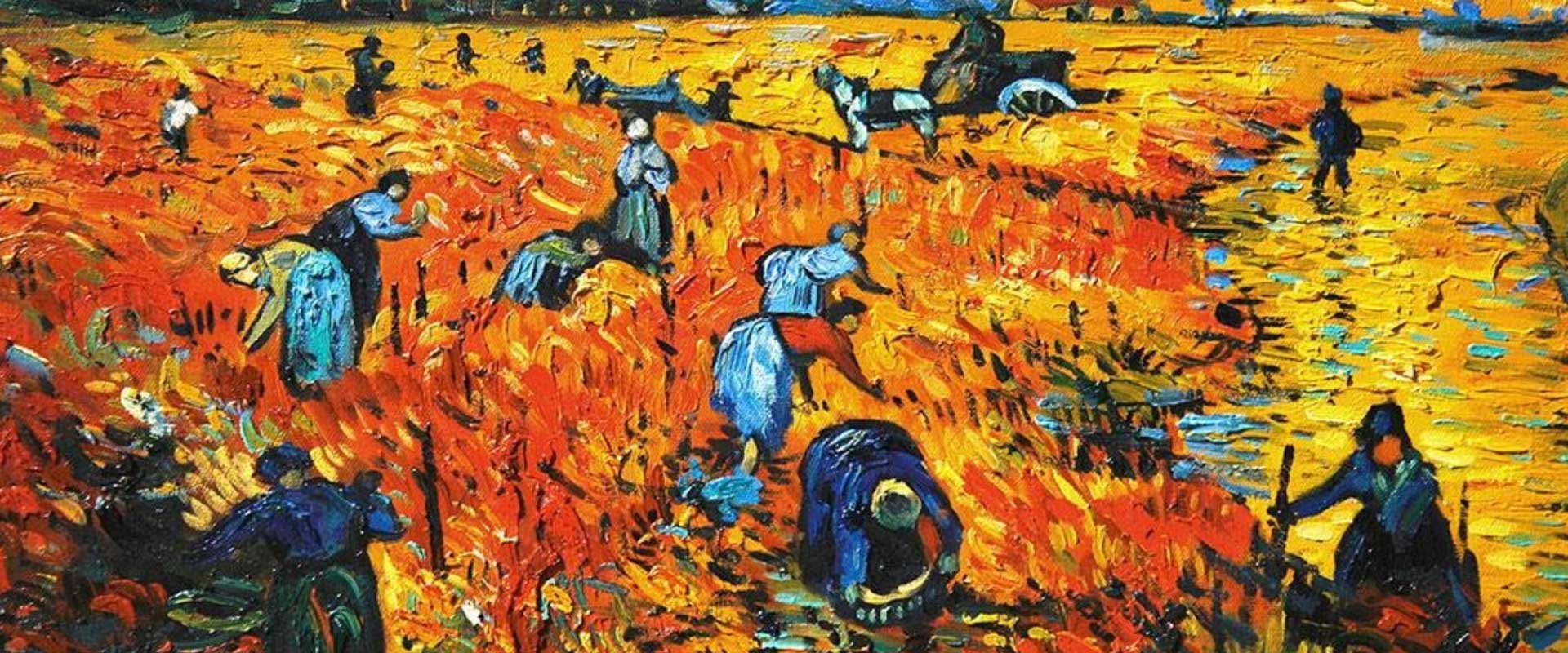It seems almost impossible to believe: Vincent van Gogh, the iconic Post-Impressionist painter whose work now commands tens of millions at auction, only sold one painting in his entire life. Despite his passion, talent, and prolific output, his art went largely unappreciated during his lifetime.
We’ll explore the story of the one painting Van Gogh sold, why it happened, and how his recognition only came after his death. It’s a tale of genius overlooked, of emotional struggle, and ultimately, of legacy reborn.
The One and Only: The Red Vineyard
In 1890, a few months before his untimely death, Van Gogh achieved something he had long dreamed of: a sale.
The Red Vineyard at Arles (1888)
- Buyer: Anna Boch, a Belgian painter and art collector
- Price: 400 francs (around $2,000 today)
- Exhibition: Les XX (The Twenty), Brussels, 1890
The painting depicts laborers harvesting grapes in the golden light of the setting sun. With its rich reds, glowing yellows, and dynamic brushstrokes, The Red Vineyard radiates warmth and energy—showcasing Van Gogh’s matured Post-Impressionist style.
Yet it went mostly unnoticed by critics and collectors. Only Boch, a progressive artist in her own right, saw its value and made the purchase.
Why Did Van Gogh Struggle to Sell His Art?
Despite painting over 900 canvases and 1,100 drawings, Van Gogh remained practically unknown during his life. Several factors contributed to this lack of recognition:
1. Radical Style
Van Gogh’s bold brushwork, vibrant colors, and emotionally charged technique were far ahead of his time. Most buyers in the late 19th century favored academic realism and classical themes—not swirling skies and thick paint textures.
His work was often described as:
- “Unfinished” or “crude”
- Emotionally unstable
- Difficult to categorize within art movements
2. Mental Health Challenges
Van Gogh suffered from depression, anxiety, and recurring psychotic episodes. His condition affected his ability to network, attend exhibitions, or market himself. Many in the art world saw him as unreliable or eccentric.
3. Geographic and Social Isolation
Van Gogh spent much of his final years in Arles, Saint-Rémy, and Auvers-sur-Oise—far from the art capitals of Paris and Brussels. His detachment from gallery life limited his visibility.
Furthermore, he lacked the backing of influential dealers and collectors that many of his peers benefited from.
4. Theo’s Support
Van Gogh’s brother, Theo, was an art dealer and his strongest supporter. Theo provided Vincent with money, materials, and emotional encouragement. However, Theo didn’t aggressively market his brother’s work—he focused more on supporting Vincent’s well-being than generating sales.
Did Van Gogh Know He Was Overlooked?
Sadly, yes. In many of his letters, Vincent van Gogh expressed deep anxiety over his artistic worth and despair over his lack of success.
In a heartbreaking letter written weeks before his death, he wrote:
“What am I in the eyes of most people—a nonentity, an eccentric, or a disagreeable man? … But I can see a time coming when people will recognize that my paintings had some value.”
Van Gogh died in July 1890, unaware that he was on the brink of global acclaim.
Recognition After Death: The Turning Point
After Vincent’s passing, Theo died just six months later. But Theo’s widow, Johanna van Gogh-Bonger, became the driving force behind preserving and promoting Vincent’s legacy.
She:
- Carefully preserved his paintings and letters
- Organized exhibitions and publications
- Worked tirelessly to position Van Gogh as a visionary artist
Thanks to her efforts, interest in Van Gogh grew rapidly during the early 20th century.
By the 1920s, art critics began re-evaluating his genius. By the mid-20th century, Van Gogh had become a household name, and today, he is considered one of the most influential artists in history.
The Value of The Red Vineyard Today
While The Red Vineyard remains in a private collection at the Pushkin Museum of Fine Arts in Moscow, its historical importance is immeasurable. It’s not just a beautiful painting—it’s a symbol of hope, perseverance, and the delayed recognition that so many great artists face.
Van Gogh’s Legacy: More Than Money
Today, Van Gogh’s paintings are among the most expensive and sought-after in the world. But his true legacy isn’t measured in francs or dollars.
It lives on in:
- The emotional resonance of Starry Night
- The golden vibrancy of Sunflowers
- The introspective honesty of his self-portraits
His story serves as a reminder that true art often isn’t appreciated until long after it’s created.
Want to Celebrate Van Gogh’s Vision?
Bring home a piece of his expressive brilliance with our Vincent van Gogh wall art prints. From The Red Vineyard to Almond Blossoms, these works continue to inspire and transform interior spaces around the world.
Conclusion
Vincent van Gogh sold only one painting during his lifetime—but he left behind a body of work that would transform the art world forever. The Red Vineyard stands as a solitary success in his life, but it also marks the beginning of a posthumous legacy that continues to grow with every passing decade.
His story is not just about talent—it’s about resilience, vision, and the eternal power of art to speak, even when its creator has fallen silent.





